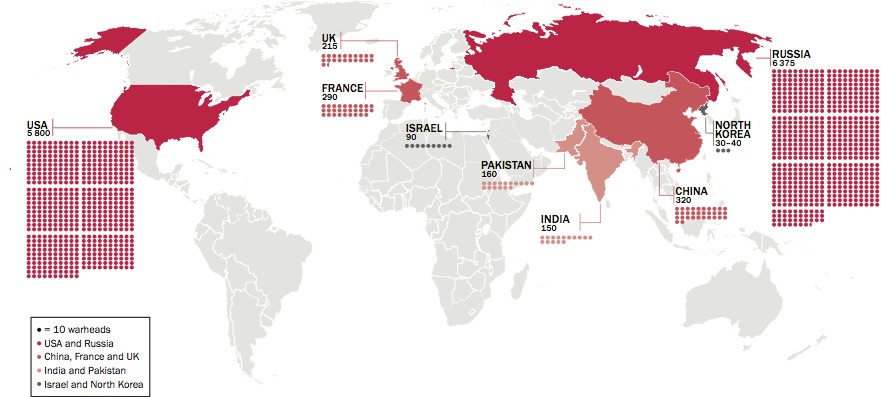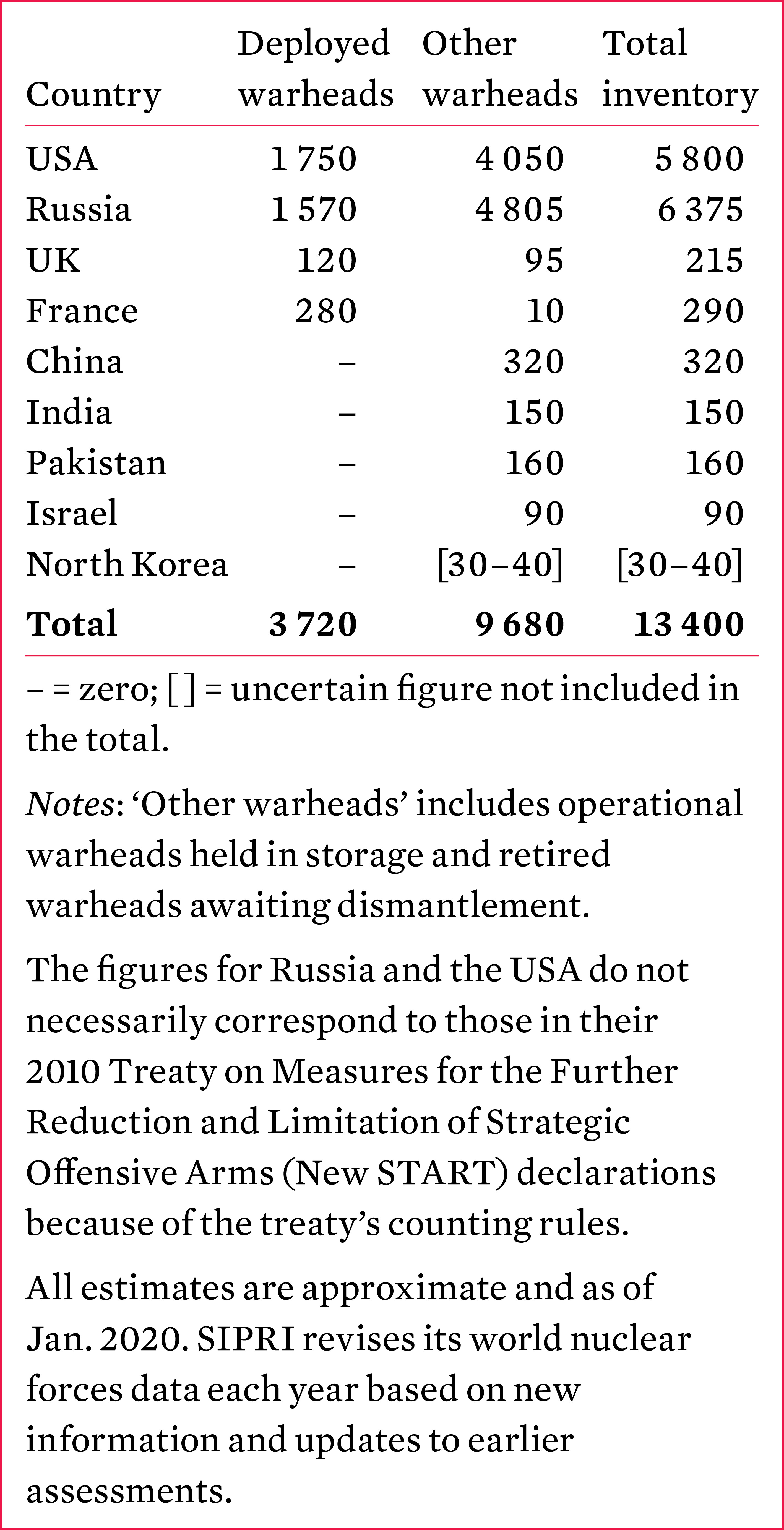10. World nuclear forces
Overview [PDF]
I. US nuclear forces, Hans M. Kristensen [PDF]
II. Russian nuclear forces, Hans M. Kristensen [PDF]
III. British nuclear forces, Shannon N. Kile and Hans M. Kristensen [PDF]
IV. French nuclear forces, Shannon N. Kile and Hans M. Kristensen [PDF]
V. Chinese nuclear forces, Shannon N. Kile and Hans M. Kristensen [PDF]
VI. Indian nuclear forces, Shannon N. Kile and Hans M. Kristensen [PDF]
VII. Pakistani nuclear forces, Shannon N. Kile and Hans M. Kristensen [PDF]
VIII. Israeli nuclear forces, Shannon N. Kile and Hans M. Kristensen [PDF]
IX. North Korea’s military nuclear capabilities, Shannon N. Kile and Hans M. Kristensen [PDF]
X. Global stocks and production of fissile materials, 2019, Moritz Kütt, Zia Mian and Pavel Podvig [PDF]
Read the full chapter [PDF].
At the start of 2020, nine states—the United States, Russia, the United Kingdom, France, China, India, Pakistan, Israel
and North Korea—possessed approxi-mately 13 400 nuclear weapons, of which 3720 were deployed with operational forces. Approximately 1800 of these are kept in a state of high operational alert.
Nuclear arsenals
Overall, inventories of nuclear warheads continue to decline. This is primarily due to the USA and Russia dismantling retired warheads. At the same time, both the USA and Russia have extensive and expensive programmes under way to replace and modernize their nuclear warheads, missile and aircraft delivery systems, and nuclear weapon production facilities. In late 2019 the USA started to deploy a new low-yield warhead on some of its nuclear-powered ballistic missile submarines.
The nuclear arsenals of the other nuclear-armed states are considerably smaller but all the states are either developing or deploying new weapon systems or have announced their intention to do so. China is in the middle of a significant modern-ization and expansion of its arsenal, and India and Pakistan are also thought to be increasing the size of their nuclear arsenals. North Korea continues to prioritize its military nuclear programme as a central element of its national security strategy, although in 2019 it continued its moratorium on the testing of nuclear weapons and long-range ballistic missile delivery systems.
Global nuclear weapon stockpiles, 2019

Low levels of transparency
The availability of reliable information on the status of the nuclear arsenals and capabilities of the nuclear-armed states varies considerably. The USA has disclosed important information about its stock-pile and nuclear capabilities but in 2019 the US administration ended the practice of publicly disclosing the size of the US stockpile. The UK and France have also declared some information. Russia refuses to publicly disclose the detailed breakdown of its forces counted under the 2010 Treaty on Measures for the Further Reduction and Limitation of Strategic Offensive Arms (New START), even though it shares the information with the USA. China now publicly displays its nuclear forces more frequently than in the past but releases little information about force numbers or future development plans. The govern-ments of India and Pakistan make state-ments about some of their missile tests but provide no infor-mation about the status or size of their arsenals. North Korea has acknowledged conducting nuclear weapon and missile tests but provides no infor-mation about its nuclear weapon capabilities. Israel has a long-standing policy of not commenting on its nuclear arsenal.
World nuclear forces, 2019
